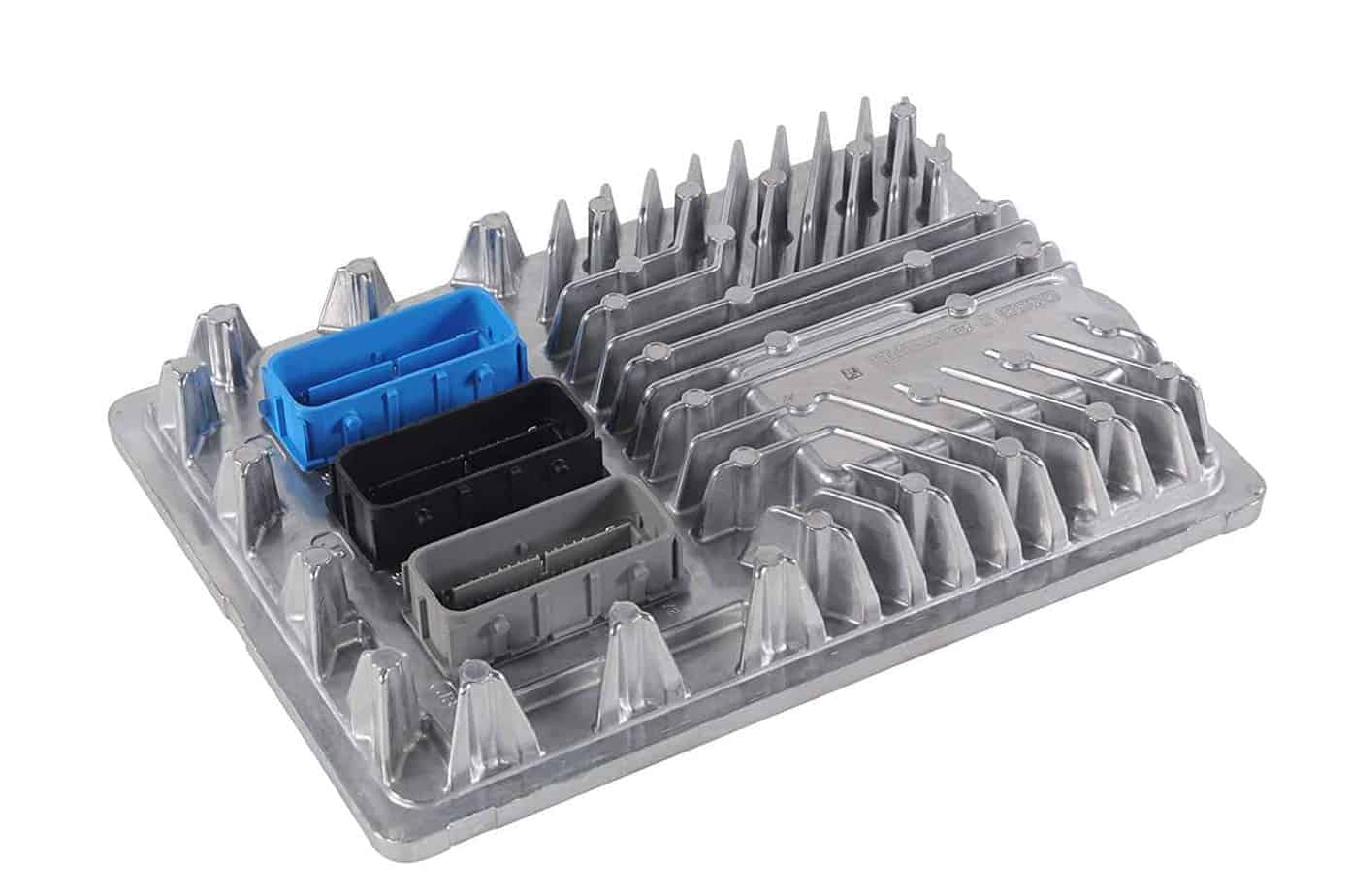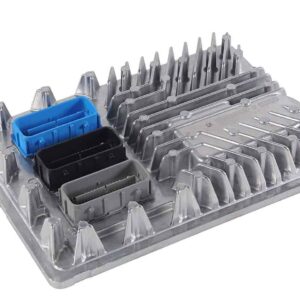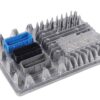Restore Peak Performance to Your GM Vehicle
Is your 2018 Cadillac Escalade, Silverado, or Corvette suddenly acting up? Experiencing frustrating no-start conditions, a persistent check engine light, or bizarre electrical behavior? The Engine Control Module (ECM), the vehicle’s central computer, is often the source of these complex issues. When it fails, it can feel like the entire vehicle is shutting down. This isn’t just an inconvenience; it’s a critical failure that compromises performance and reliability. As a technician with over two decades of experience, I’ve seen firsthand how a faulty ECM can mimic a dozen other problems, leading to expensive and unnecessary repairs.
This replacement Engine Control Module, compatible with part number 12688528 and others, is the definitive solution. We take the guesswork and hassle out of the repair by pre-programming the module with the latest official GM software, tailored specifically to your vehicle’s VIN. This means you receive a part that’s not just a replacement, but one that’s loaded with the most current calibrations to optimize engine efficiency, fuel economy, and emissions performance. You get a reliable fix without the high cost and scheduling delays of a dealership service department.
Is Your GM Vehicle Showing These ECM Failure Signs?
- ✔ Vehicle will not start or cranks but fails to turn over.
- ✔ Check Engine Light is illuminated with communication-related Diagnostic Trouble Codes (DTCs) like U0100.
- ✔ Internal processor failure codes, such as P0601, P0606, or P062F, are present.
- ✔ Poor fuel economy or a noticeable drop in engine power.
- ✔ Erratic automatic transmission shifting or gear selection problems.
- ✔ Seemingly unrelated warning lights appearing on the dashboard.
From the Diagnostic Bay: The Ghost in the Machine
I remember a 2018 Sierra 1500 that came into the shop with a laundry list of complaints. The owner was frustrated, having already replaced a few sensors with no luck. The truck would occasionally stall at idle and had both engine and transmission codes stored. A less experienced tech might have started chasing transmission ghosts, but the variety of unrelated codes screamed ‘central processor issue.’ We hooked up the scan tool and saw a P0606 (ECM/PCM Processor Fault). Instead of sending the owner to the dealer for a new, un-programmed module, we sourced a VIN-programmed unit like this one. After installation and a quick crankshaft variation relearn, the truck ran perfectly. All the ghost codes vanished. This approach saved the customer hundreds of dollars and a full day of lost time.
Your Straightforward ECM Installation Guide
Installing your new ECM is a manageable job for a confident DIYer or any professional technician. Follow these steps to ensure a smooth process.
- Safety First: Always disconnect the negative terminal from your vehicle’s battery before beginning any electrical work.
- Locate the ECM: The location varies by model. On many GM trucks and SUVs (like the Escalade, Tahoe, Silverado), it’s in the engine compartment on the driver’s side. On the Corvette, it’s typically under the dash on the passenger side. Consult a service manual for your specific vehicle if you’re unsure.
- Disconnect and Remove: Carefully unplug the electrical connectors. Most have a locking tab that needs to be released. Once disconnected, unbolt the module from its mounting bracket and remove it from the vehicle.
- Install the New Module: Seat the new, pre-programmed ECM into the mounting bracket and secure it with the bolts. Reconnect the electrical harnesses, ensuring they click securely into place.
- Reconnect the Battery: Re-attach the negative battery terminal.
- Final Relearn Procedures: This is a critical step. The vehicle will likely not start until a Vehicle Theft Deterrent System (VTDS) relearn is performed. This requires a professional scan tool with access to GM’s TIS2Web or Techline Connect service. Other procedures, like a Crankshaft Position Variation Relearn, may also be necessary to clear certain DTCs and ensure optimal performance. This is the responsibility of the installer.
Verified Compatibility for Your GM Vehicle
This module is a direct-fit replacement for the following vehicles and part numbers. Please verify your part number or contact us with your VIN to confirm compatibility.
Replaces Part Numbers: 12704475, 12692069, 12680656, 12686383, 12688528
- 2018 Cadillac Escalade / Escalade ESV (Engine Compartment)
- 2018 Cadillac XTS (3.6L, VIN 8)
- 2018-2019 Chevrolet Corvette (RH Cowl Under Dash)
- 2018 Chevrolet Silverado 1500 (LH Front Engine Compartment)
- 2018 Chevrolet Suburban 1500 (LH Front Engine Compartment)
- 2018 Chevrolet Tahoe (LH Front Engine Compartment)
- 2018 Chevrolet Express 2500 / 3500 Van (4.3L, LH Rear Engine Compartment)
- 2018 GMC Sierra 1500 / Sierra Denali 1500 (LH Front Engine Compartment)
- 2018 GMC Yukon / Yukon XL 1500 (LH Front Engine Compartment)
- 2018 GMC Savana 2500 / 3500 Van (4.3L, LH Rear Engine Compartment)
Is programming included in the price?
Is programming included in the price?
Yes! We program the module to your vehicle’s specific VIN with the latest GM software before shipping. Please provide your VIN at checkout to prevent any delays.
What is a ‘theft relearn’ and why is it necessary?
Modern GM vehicles have a security system that pairs the ECM to the vehicle to prevent theft. When a new ECM is installed, the vehicle won’t start until this security handshake is re-established. This ‘relearn’ procedure requires a professional scan tool with access to GM’s software (like Techline Connect) and is the installer’s responsibility.
Will this fix my check engine light?
If your check engine light is caused by an internal ECM failure (e.g., codes P0601, P0606), this replacement module is the correct fix. However, if the light is on due to a faulty sensor or other component, you will still need to diagnose and repair that separate issue.
Do I need to send my old ECM back?
No core charge or return is required for this part. You can recycle your old module locally.
Can I install this myself?
The physical installation is straightforward for many DIYers. However, the final, mandatory theft relearn and potential crankshaft variation relearn require professional-grade tools. We recommend installation by a qualified mechanic or a DIYer who has access to the necessary equipment.



